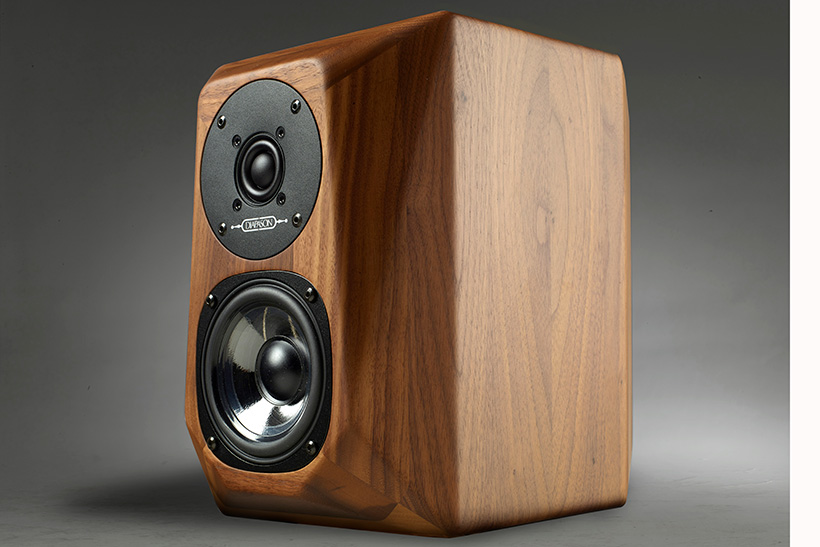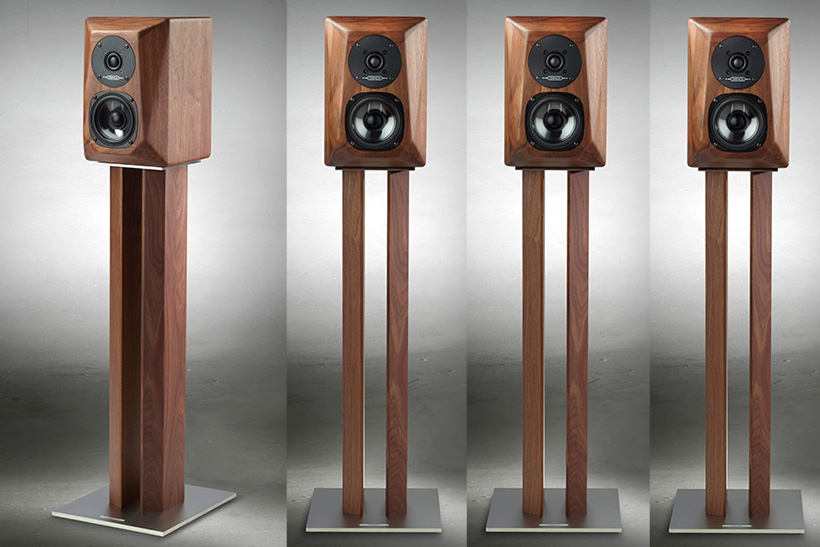Diapason is a brand which consistently creates loudspeakers to my taste, for that is what transducers principally are: to the listeners’ taste. This is why I paid a visit to their northern Italy production facilities to see the hand-made creations come to life, and theirs is always a room at hi-fi shows which I make a bee-line for.
I read, fairly recently, an overseas hi-fi writer who claimed that it was not the job of a speaker to faithfully reproduce what has been recorded. I nearly choked on my cornflakes at this suggestion. As someone who began an audio career at the BBC, that is precisely what we were told loudspeakers are there to do. Thankfully Diapason’s founder and designer, Alessandro Schiavi, is a musician. This means he knows what a piano in a symphony hall sounds like, the tones of a violin or a cello and can therefore ensure that his designs re-create them in a realistic way, or at least as much as possible given the limitations of two cones pushing soundwaves into the listening arena.
Design
This new two-way model is, in essence, a compact version of the brand’s Adamantes V, following the same proportions and multi-faceted design. In other ways, aesthetically at least, it also resembles the former Karis II. But that is only part of the story because, inside, the updated replacement is dramatically different. The opportunity has been taken to make many design improvements which have, by necessity, led to a modest uplift in price. That said, the refinements are worth the effort as becomes evident from just a few moments listening to the harmonics generated by this solid box.

The first Karis was launched (back in 1998) at the Heathrow show, then it was upgraded to Karis II, including the addition of 24kt gold binding post. I know that this little gem is really dear to Alessandro’s heart because its arrival on the market coincided with the arrival of his daughter Martina
Technology
Now in Mk III form, Diapason’s exquisite mini features several enhancements over its immediate predecessor. These include a new SEAS 110mm DirectDrive bass unit with an enlarged magnet promising greater LF definition; a replacement 19mm silk-dome tweeter with wide surround (also courtesy of SEAS but to Diapason’s specifications); new crossover board (labelled RSPCB, standing for Reference Series Printed Circuit Board); internal wiring in the form of van den Hul’s CS12 cable; a more consistent 8 Ohm impedance intended to provided an easier load for both tube and solid-state electronics, as well as optimisation of the wooden stave assembly in the solid-wood cabinet for greater rigidity and stability. Internally, those wooden surfaces are not flat but lightly sculpted into wave shapes in an effort to better minimize internal resonances than was possible with the earlier versions. Diapason does not follow the example of BBC-designs with their flexible cabinets which try to drive unwanted resonances out of the critical audio band; rather the Italian designer employs varying cabinet wall thickness, with acoustic properties which become part of the overall sound. While Diapason’s designer aims for a broadband suppression of unwanted harmonics, any remnants are spread across the frequency response to be swamped by the direct sound. This could explain the speaker’s innate warmth and that enormous soundstage which will comprise more than simply the output of the two drive units.
In fact that enclosure is worthy of further note. The simply luxurious cabinet is made from expertly finished solid Canaletto walnut staves, so we have something which is beautiful in appearance, exquisite to the touch and producing a superbly controlled and natural sound into the bargain. As with other Diapason designs, the Karis’ crossover has been created with the fewest possible components in the signal path and is connected directly to the rear connectors which are located below the reflex port.
Sound quality
Coupled to a Hegel H95 under review, but also tested with the larger and more powerful H120 (both on its own and used as a preamp feeding Trigon monoblocks), the Karis IIIs were soon singing from a variety of sources including streamed music and satellite broadcast reception.

The immediate sensation was of a fetching, almost addictive mid-band produced as part of an immense soundstage; one far, far bigger than the speakers’ size would suggest. The speakers simply sung with vocal material (everything from Kylie Minogue to the Wandsworth School Boys’ Choir – Britten’s original Noye’s Fludde on Decca) revealing voice textures in all their glory. These units were equally at home on opera, perhaps not surprising for a model originating from Italy? From Verdi’s Macbeth (Abbado on DG) to Der Rosenkavalier (Solti on Decca) these little beauties excelled, producing a wonderfully realistic 3D soundstage (enhanced when positioned about 1m from the rear wall) and enough space in the presentation for backing singers while the leads came through with clarity and pinpoint detail.
Here we have a mini monitor of extreme quality which works incredibly well in small to medium-sized rooms, as well as creating an exquisite sound in the near-field. Don’t expect these small boxes to fill a vast space, that would be asking them to defy the laws of physics. We often refer to this kind of design as a ‘bookshelf’ but here that would not be appropriate since the cabinets need to breathe, although with less wall clearance than I originally thought necessary.
In many ways the Karis reminded me of the old LS3/5A which I used to work with in BBC studios back in the day: the size and overall tonal balance were similar although here we have a sweeter, fuller and smoother midrange response. The Karis is a vastly superior performer with greater resolution, a more involving sound and a much more engaging presentation than that BBC design.
Small speakers aren’t generally known for their LF performance, although there are notable exceptions. The Karis III has a -3dB point specified at 60Hz. In use, I would say this is rather conservative and I achieved an in-room response lower than this, enough in fact to excite a known resonance I have close to UK mains hum frequency of 50Hz. The bass that is produced is surprisingly and delightfully potent, enough certainly to aid the pace and timing credentials which are over and above what might be expected for the enclosure size. So, while we might lack ultimate bass quantity this is more than made up for by the quality of lower notes, being joyfully tuneful and agile enough to keep the tune flowing. However, outright bass extension is limited (physics again playing its part) and, while I achieved sufficient SPL to entertain the neighbours, these units are primarily intended for use in smaller (if not purely small) rooms.

I kept coming back to that luscious midrange which was a joy to behold, not least using the speakers either size of my monitor for great portrayal of TV sound via the Astra satellite with everything from drama and news broadcasts to live music recitals. On large-scale works, the Karis III surpasses many a speaker of this size with its ability to produce a wondrously large presentation with timing that many designs in this class would envy. So it was with Sibelius 5 (Karajan and the BPO on DG) where the symphony’s massive final chords were handled with aplomb to convey the scale and excitement of the work.
The choice of that silk-dome SEAS tweeter (rather unfairly referred to by one designer I worked with as “stretched knicker elastic”) ensures that the HF remains smooth and never over-powering. Which is often the case with more and more of today’s designs in an attempt to enhance listener excitement in what I find a totally unnatural way. This might be seen as a lack of ‘air’ but all parts of the spectrum need to be kept under control in order to create a harmonious whole – and that is what Schiavi has achieved so competently in the Karis III.
Conclusion
Here is a speaker where it’s possible to close the eyes and believe, as the whole performance is arrayed beautifully across a 3D soundstage which seems astonishing given the compact cabinets. Craftsmanship is to an extremely high standard and the exquisite cabinets, crafted from 20 year-old aged walnut, look and feel sensational with their 18 surfaces rather than the six of a standard snap-together loudspeaker box.
At European shows I’ve heard it said that this speaker (in Mk II form) liked vinyl sources and valve amplification; yet I achieve astonishing results from digital sources and solid-state electronics, such is the transformation to the new Karis III. Set-up was straightforward and the little drive units are so well integrated as to generate energy in the room in a thoroughly involving way. These are not studio monitors, in the true sense of the term, and that’s a big plus because Karis III does not dissect music for critical analysis; rather it lets the sound flow cohesively into an enjoyable and highly believable presentation. Once again, Schiavi has done his magic and produced a masterpiece.


